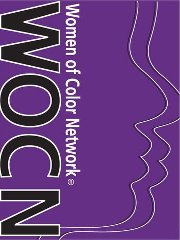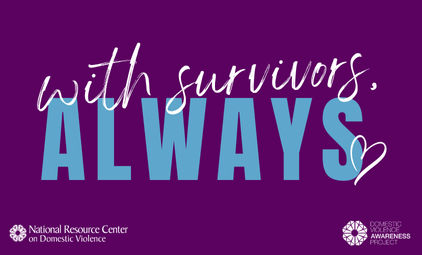#OrangeURWorld
 The 16 Days of Activism against Gender Violence is an international campaign dating back to 1991. It begins annually on November 25th with the International Day for the Elimination of Violence Against Women, a date marked by activists in 1981 in commemoration of the three Mirabal sisters, political activists in the Dominican Republic who were murdered by Dominican dictator Rafael Trujillo. On December 17, 1999, the date received its official resolution from the General Assembly of the United Nations.
The 16 Days of Activism against Gender Violence is an international campaign dating back to 1991. It begins annually on November 25th with the International Day for the Elimination of Violence Against Women, a date marked by activists in 1981 in commemoration of the three Mirabal sisters, political activists in the Dominican Republic who were murdered by Dominican dictator Rafael Trujillo. On December 17, 1999, the date received its official resolution from the General Assembly of the United Nations.
The 16 Days conclude on International Human Rights Day, celebrated on December 10th to mark the anniversary of the adoption of the Universal Declaration of Human Rights in 1948.
During the 16 Days, we join UN Women’s Say NO – UNiTE to End Violence against Women campaign, calling on individuals and groups around the world to take action to end all forms of violence against women and girls. Join us! Learn more about the multimedia #OrangeURWorld campaign, add your name to the global call to action, and download a desktop calendar to stay informed and help build the global momentum.
This eNewsletter provides relevant announcements impacting your work and highlights new resources and initiatives supporting your continued efforts to end domestic and sexual violence.
RUNAWAY AND HOMELESS YOUTH
 This November, go green for National Runaway Prevention Month, sponsored by the National Runaway Safeline. The Green Light Project offers simple ways to participate by planning a green light ceremony, securing a landmark or building in the community to be lit green in November, and distributing green lapel pins to local government officials and businesses. To learn more about addressing relationship violence with runaway and homeless youth, access the Runaway & Homeless Youth and Relationship Violence Toolkit by the National Resource Center on Domestic Violence.
This November, go green for National Runaway Prevention Month, sponsored by the National Runaway Safeline. The Green Light Project offers simple ways to participate by planning a green light ceremony, securing a landmark or building in the community to be lit green in November, and distributing green lapel pins to local government officials and businesses. To learn more about addressing relationship violence with runaway and homeless youth, access the Runaway & Homeless Youth and Relationship Violence Toolkit by the National Resource Center on Domestic Violence.
EVENT SUMMARIES FROM DVAM 2013
 Each year the National Resource Center on Domestic Violence organizes events and activities in observance of National Domestic Violence Awareness Month (DVAM). Detailed below are highlights of each resource with links to Storify summaries of events, which incorporate text, audio recordings, social media posts, images and links to other related materials.
Each year the National Resource Center on Domestic Violence organizes events and activities in observance of National Domestic Violence Awareness Month (DVAM). Detailed below are highlights of each resource with links to Storify summaries of events, which incorporate text, audio recordings, social media posts, images and links to other related materials.
VIOLENCE AGAINST IMMIGRANT WOMEN
 Our Special Collections on violence against immigrant women in the United States were updated with new resources and information:
Our Special Collections on violence against immigrant women in the United States were updated with new resources and information:
Immigrant Women and Domestic Violence updated by Sheetal Rana (October 2013)
This collection highlights the common experiences of immigrant women who are in abusive relationships, the legal protections and public benefits available, and practices and suggestions for increasing the effectiveness of services provided to immigrant women.
Immigrant Women and Sexual Violence updated by ASISTA (October 2013)
This collection highlights the common experiences of immigrant women who are victims of sexual violence, the legal protections and public benefits available, and practices and suggestions for increasing the effectiveness of services provided to immigrant women.
PARENTAL ALIENATION

Parental Alienation Syndrome and Parental Alienation: A Research Review by Joan S. Meier (Updated September 2013)
This paper provides a historical and research overview of Parental Alienation Syndrome and Parental Alienation, identifies strategic issues for advocates working with victims, and offers guidelines to improve courts’ treatment of these issues.
The willingness to pathologize capable mothers even extends to mothers’ ‘warm, involved’ parenting – which they assert can powerfully fuel alienation in a child (Johnson et al., 2005, p. 208; Kelly and Johnston, 2001). Such discussions are more than sufficient to ensure that whenever a mother and child have ambivalence about the children’s father, and certainly in most cases where mothers allege abuse, virtually any loving parenting by the mother can be labeled a form of ‘alienation’.
WOCN LEADERSHIP ACADEMY & ASPIRING ALLIES PROJECT
 The Women of Color Network (WOCN), with support from the Family Violence Prevention and Services Program (FVPSA), will be conducting a Leadership Academy for Marginalized Populations and Aspiring Allies Project in selected states: Arizona, California, Massachusetts, Oregon and West Virginia. Fellows have been selected and will be notified this week. Please keep an eye out for more WOCN opportunities including:
The Women of Color Network (WOCN), with support from the Family Violence Prevention and Services Program (FVPSA), will be conducting a Leadership Academy for Marginalized Populations and Aspiring Allies Project in selected states: Arizona, California, Massachusetts, Oregon and West Virginia. Fellows have been selected and will be notified this week. Please keep an eye out for more WOCN opportunities including:
NATIVE LANGUAGE TRANSLATIONS
 The National Indigenous Women’s Resource Center is seeking your help in the process of collecting Native language translations of a few words that resonate with NIWRC’s work – words such as safety, sacred, honor, respect, and love. Their goal is to honor the strength and beauty in our ancestral languages by representing a diverse array of Native communities and cultures in the design of their publications, resources, and promotional materials. Submit your translations today!
The National Indigenous Women’s Resource Center is seeking your help in the process of collecting Native language translations of a few words that resonate with NIWRC’s work – words such as safety, sacred, honor, respect, and love. Their goal is to honor the strength and beauty in our ancestral languages by representing a diverse array of Native communities and cultures in the design of their publications, resources, and promotional materials. Submit your translations today!
TA QUESTIONS OF THE MONTH
![]()
Read and comment on these recent requests received by the National Sexual Violence Resource Center and National Resource Center on Domestic Violence!
November 2013: How can I help runaway and homeless youth in my community to be safe from abuse?
Millions of youth run away or are thrown out from their homes every year. Yet, services designed to support them are rare in most communities. National Runaway Prevention Month (NRPM), sponsored every November by the National Runaway Safeline, is an excellent opportunity to raise awareness of and educate others in your community.
September 2013: How can I ensure that media coverage of domestic violence during DVAM is thoughtful and on target?
The public gets the majority of its information about the world from the media. (…) If we are going to educate the public about domestic violence — encourage them to take action to prevent or reduce this crime, or ask them to support our efforts — we must work with the media. (Media Outreach Made Easy)
RECENT ADDITIONS
View all recent additions to the VAWnet library. Highlights include:
Gender and Social Movements: Overview Report by Jessica Horn for BRIDGE (September 2013)
Partnering to Address Faith and Safety: A Guide for Faith Leaders and Domestic and Sexual Violence Service Providers to Assist Older Victims of Abuse by Safe Havens Interfaith Partnership Against Domestic Violence and The National Clearinghouse on Abuse in Later Life (2013)
Start Strong: Building Healthy Teen Relationships by the Robert Wood Johnson Foundation (RWJF) in collaboration with Blue Shield of California Foundation and Futures Without Violence (November 2013)
Confronting Commercial Sexual Exploitation and Sex Trafficking of Minors in the United States by the Institute of Medicine and National Research Council (2013)
Trauma-Informed Child Welfare Practice Toolkit by the Chadwick Trauma-Informed Systems Project of the National Child Traumatic Stress Network (2013)
Criminal Records & Employment Rights: A Tool for Advocates Working with Domestic Violence Survivors by Erika Sussman for the Center for Survivor Agency and Justice (October 2013)
Trauma-Informed Approaches: Federal Activities and Initiatives: A Working Document, Second Report by the Federal Partners Committee on Women and Trauma of the National Institute of Corrections (September 2013)
Building Safer States: Core Components of State Public Health Injury & Violence Prevention Programs by the Safe States Alliance (2013)
Intimate Partner Violence In LGBTQ and HIV-Affected Communities in the United States in 2012 by the National Coalition of Anti-Violence Programs (NCAVP) (October 2013)
When Men Murder Women: An Analysis of 2011 Homicide Datae by the Violence Policy Center (VPC) (September 2013)
















